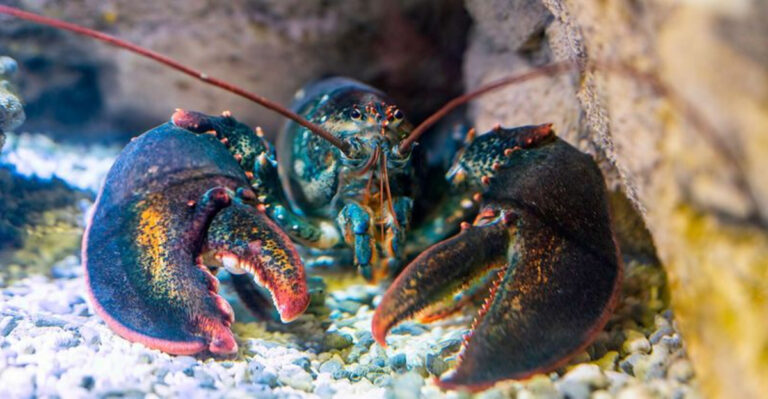How To Bathe A Cat And Avoid A Disaster
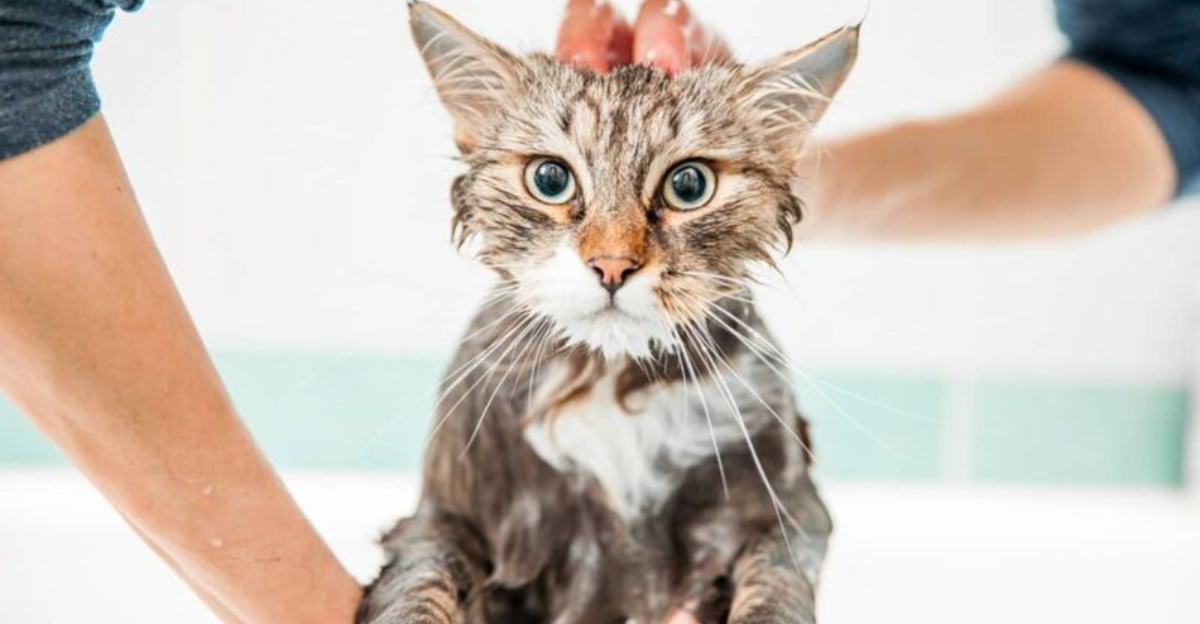
Ever tried to bathe a cat? Then you know it can feel like wrestling an octopus covered in butter. Most felines hate water with a burning passion, turning bath time into a scene from an action movie.
But sometimes our furry friends need cleaning, whether they’ve rolled in something smelly or have a medical need for a wash.
1. Tire Them Out First
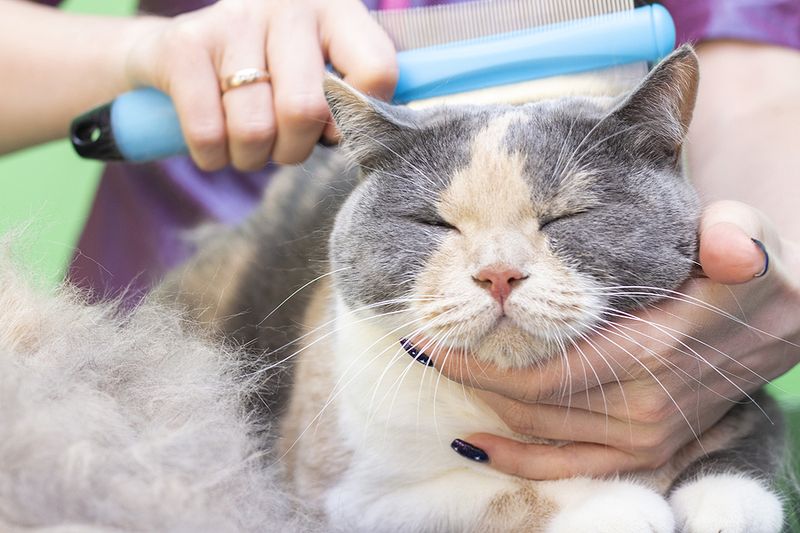
Play time before bath time works wonders! A tired cat has less energy for escape attempts and dramatic protests. Break out the feather toys or laser pointer for a solid 15-20 minute play session.
Your exhausted kitty will be more likely to accept their sudsy fate with minimal scratching and yowling. Think of it as strategic preparation rather than trickery.
2. Gather All Supplies Beforehand
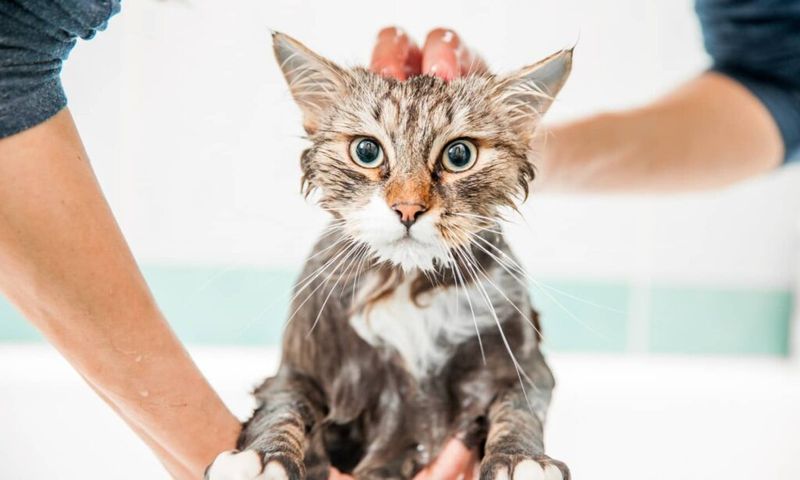
Running to grab forgotten shampoo with a wet, angry cat in the tub is a recipe for disaster. Collect everything you’ll need: cat-specific shampoo, towels, a non-slip mat, and treats for afterward.
Place items within arm’s reach but safe from splashing paws. This preparation minimizes bath time and reduces your cat’s stress level considerably.
3. Create A Non-Slip Surface
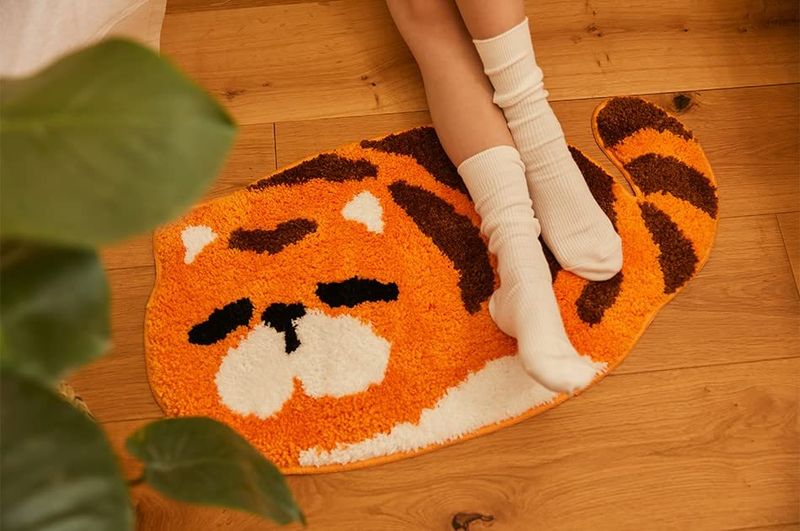
Slipping around on a slick tub bottom terrifies cats and triggers their panic mode. Place a rubber mat or even a folded towel at the bottom of the sink or tub to give your kitty secure footing.
When cats feel physically stable, their anxiety decreases dramatically. This simple trick prevents the frantic scrambling that leads to scratched arms and soaked bathrooms.
4. Use Lukewarm Water Only
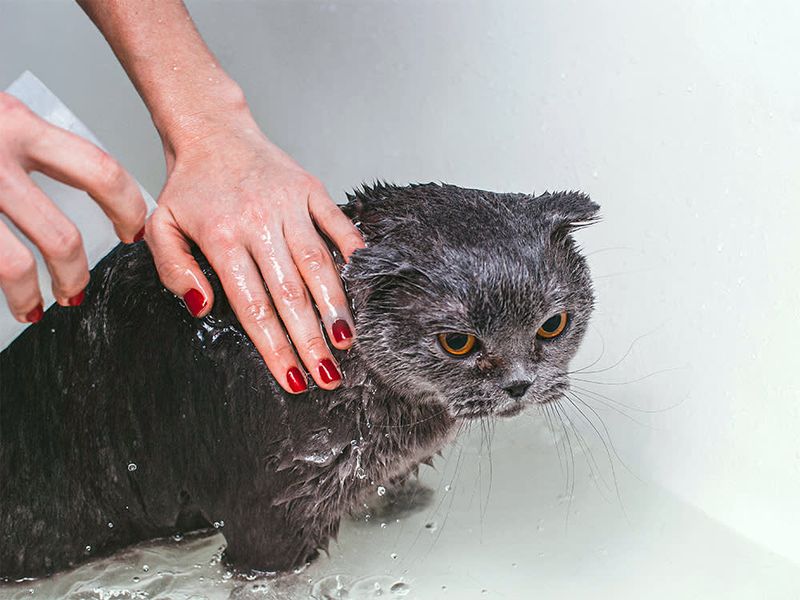
Hot water shocks sensitive cat skin, while cold water feels uncomfortable and scary. Test the water on your wrist – it should feel barely warm, similar to kitten bottle temperature.
Fill the tub or sink with just a few inches of water before bringing kitty in. The sound of running water often triggers fear, so have everything ready before your cat makes their entrance.
5. Try The Shower-Cap Method
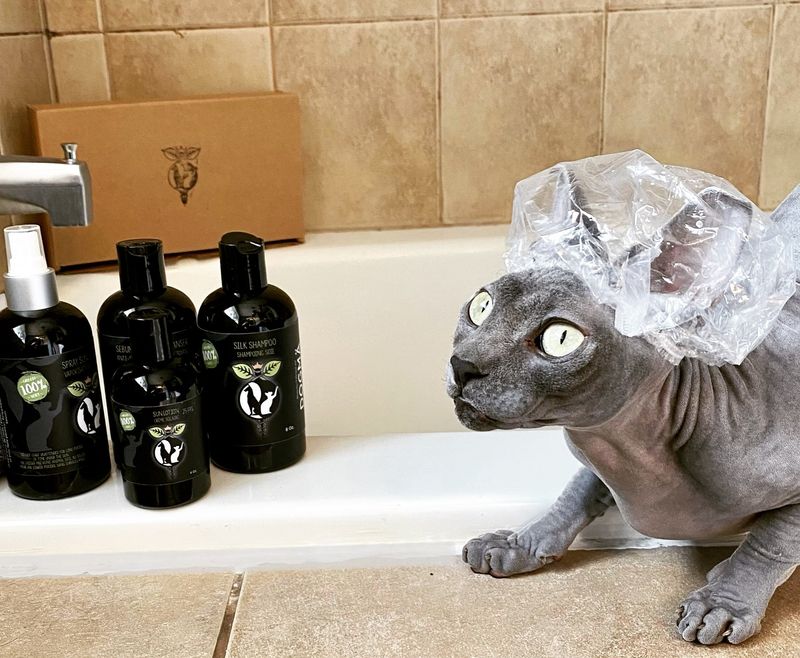
Most cats hate water on their faces more than anything. A clever hack involves cutting a hole in a shower cap for your cat’s face while protecting their ears and head from water.
Gently place it over their head, ensuring their face remains comfortably exposed. This bizarre-looking solution prevents water from trickling into sensitive ears and eyes, reducing bath time stress significantly.
6. Enlist A Helper
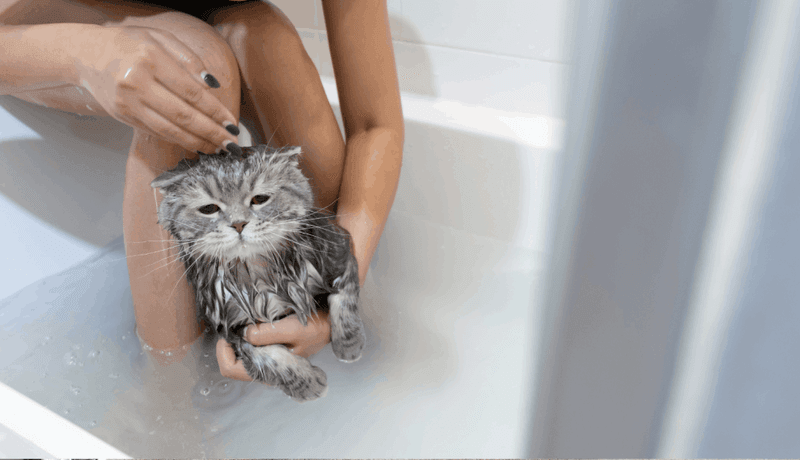
Four hands are infinitely better than two when bathing a reluctant feline. One person can gently hold and reassure the cat while the other handles the actual washing process.
Your helper can talk soothingly to your cat and maintain a secure but gentle grip. Taking turns with the tasks prevents either human from getting too scratched up during the ordeal.
7. Skip The Dunking
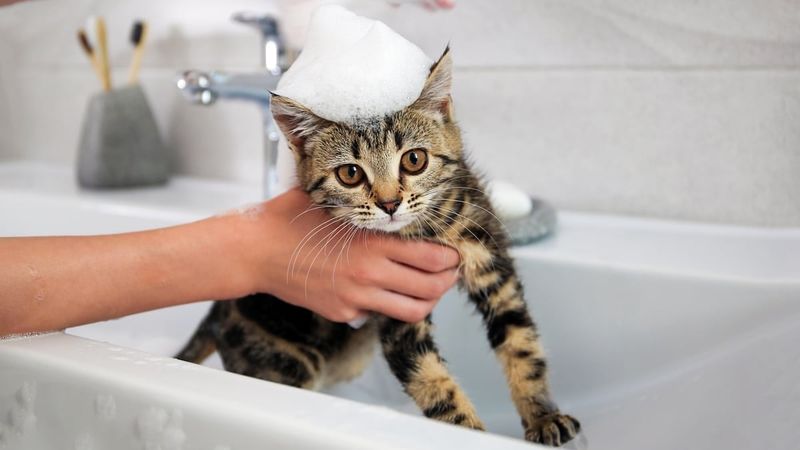
Forget submerging your cat like a submarine – that’s a fast track to fury. Instead, use a plastic cup or handheld sprayer to wet their body gradually, avoiding their head entirely if possible.
Start from the neck and work backward, speaking calmly throughout. Many cats tolerate this approach better than the shocking sensation of being lowered into standing water.
8. Mind The Ears And Eyes
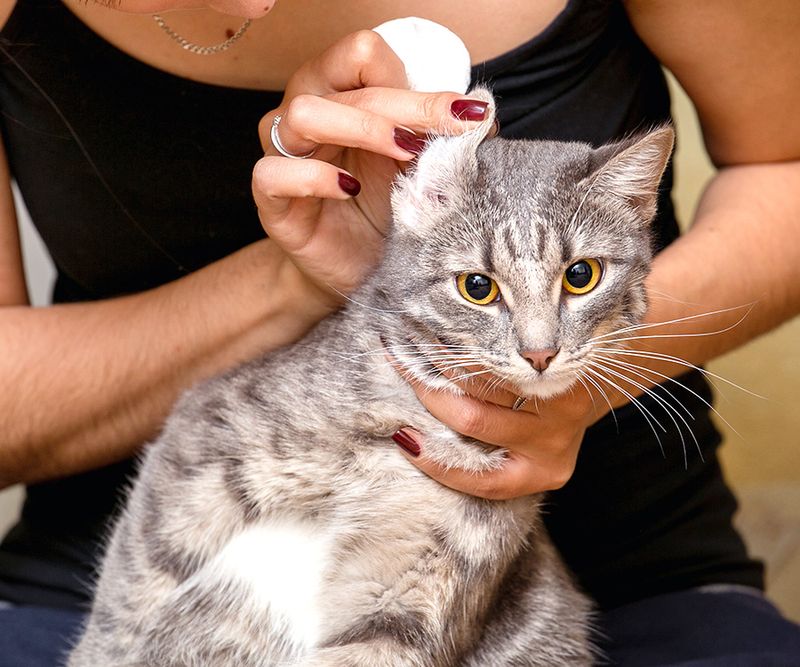
Water in sensitive areas creates discomfort and potential health issues. Use a damp washcloth for your cat’s face, wiping gently around the eyes and mouth.
Keep water and shampoo away from ears completely. Cotton balls placed gently at the entrance of ear canals (not inside) can help prevent water from getting where it shouldn’t.
9. Rinse Thoroughly
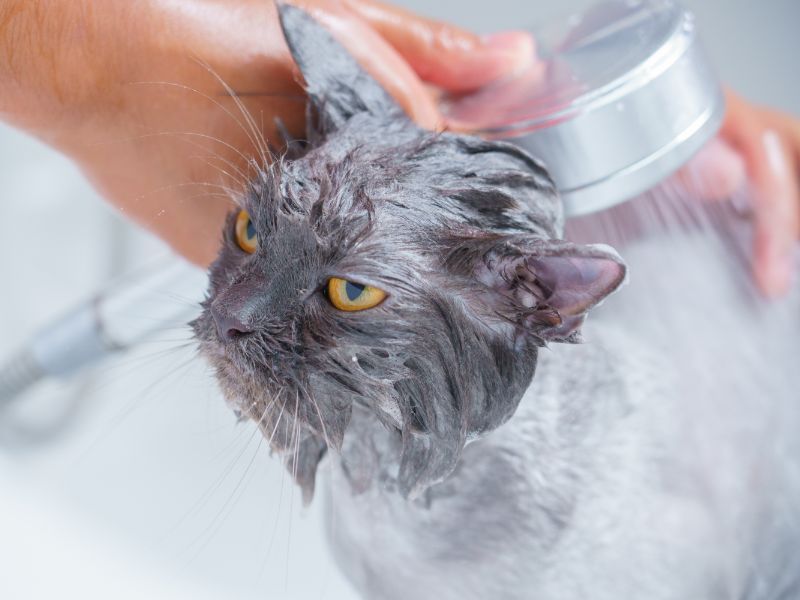
Leftover shampoo residue causes skin irritation and encourages excessive licking. Rinse until the water runs completely clear, which often takes longer than you might expect.
Pay special attention to dense fur areas and under the belly. Your cat will thank you by not developing itchy skin or ingesting soap during their post-bath grooming session.
10. Wrap Immediately In A Warm Towel
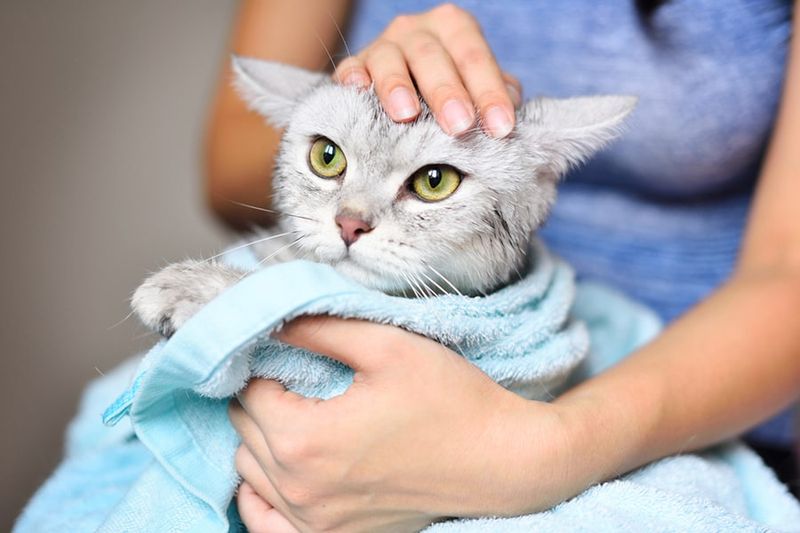
Wet cats get cold quickly, making a warm towel essential for post-bath comfort. Pre-warm a fluffy towel in the dryer before wrapping your drenched kitty burrito-style as soon as bath time ends.
The warmth provides comfort while you gently blot (never rub) their fur. Many cats calm down significantly once they’re wrapped up snugly.
11. Reward Generously Afterward
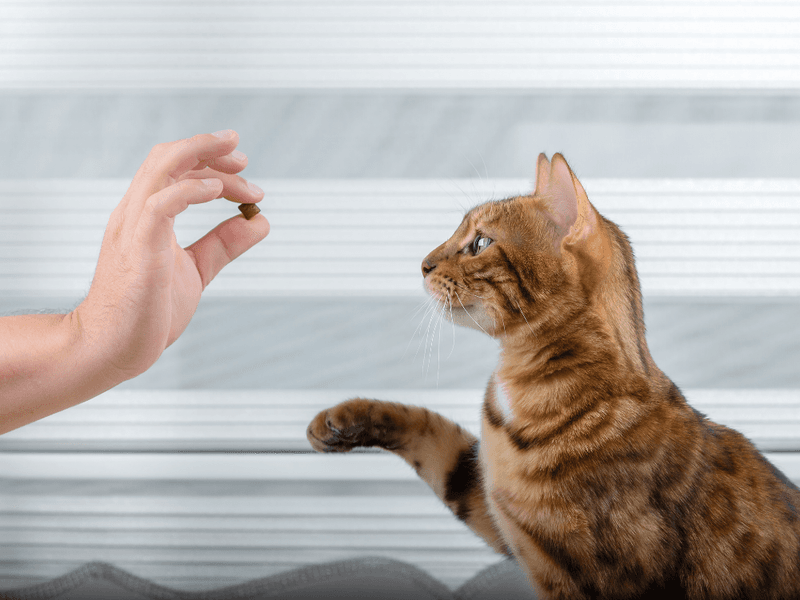
Positive reinforcement works wonders for future bath acceptance. Immediately after the towel-drying session, offer high-value treats reserved specifically for post-bath celebrations.
Some cats appreciate quiet time in a warm spot, while others might want extra playtime or cuddles. Learning your cat’s preferred reward helps build more positive associations with the bathing process over time.






